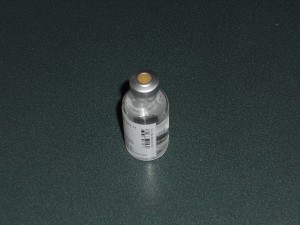 Here’s my motto for storing insulin: if I’m comfortable, my insulin is comfortable. Insulin is a protein, so it can’t get too hot or too cold or it will denature (change shape and not work the way it’s supposed to – think of an egg when you boil or fry it). Insulin should never be left in a car (cars can get very hot or very cold), placed in checked baggage (cargo gets extremely cold), or stored in any location with extreme temperatures (radiator, freezer, directly on ice, by a bonfire, you get the idea).
Here’s my motto for storing insulin: if I’m comfortable, my insulin is comfortable. Insulin is a protein, so it can’t get too hot or too cold or it will denature (change shape and not work the way it’s supposed to – think of an egg when you boil or fry it). Insulin should never be left in a car (cars can get very hot or very cold), placed in checked baggage (cargo gets extremely cold), or stored in any location with extreme temperatures (radiator, freezer, directly on ice, by a bonfire, you get the idea).
Insulin should be stored in the refrigerator until you are ready to use it. While in the refrigerator, unopened, insulin is good until the expiration date stamped on the box. Once you open a vial of insulin, it is good for approximately 30 days. Opened vials of insulin can be kept at room temperature for the 30 days. While it’s OK to do so, it is not necessary to keep the insulin you are currently using in the refrigerator, and cold insulin hurts more going in.
If you are using the insulin to fill a pump cartridge/reservoir, bringing it to room temperature first actually helps to reduce the risk of bubbles. The only time I keep the insulin I’m currently using in a refrigerator is if I am traveling to a place that it very hot. In some cases, it may be a good idea to keep insulin in a cool pack, for instance, if you are hiking in an extremely hot climate, or at the beach.
Once you open an insulin pen, it is good for the number of days indicated on the package, and it is kept out of the refrigerator (leave the remaining unopened pens in the refrigerator).
Most insulin is clear. NPH is the only cloudy insulin available in the US, and because it is a suspension, it needs to be mixed evenly (by rolling the bottle upside down between your palms) before using. All the other types of insulin available are clear – if your clear insulin suddenly appears cloudy or if any insulin has crystals or clumps in the bottle, discard it immediately and open a new vial/pen.
